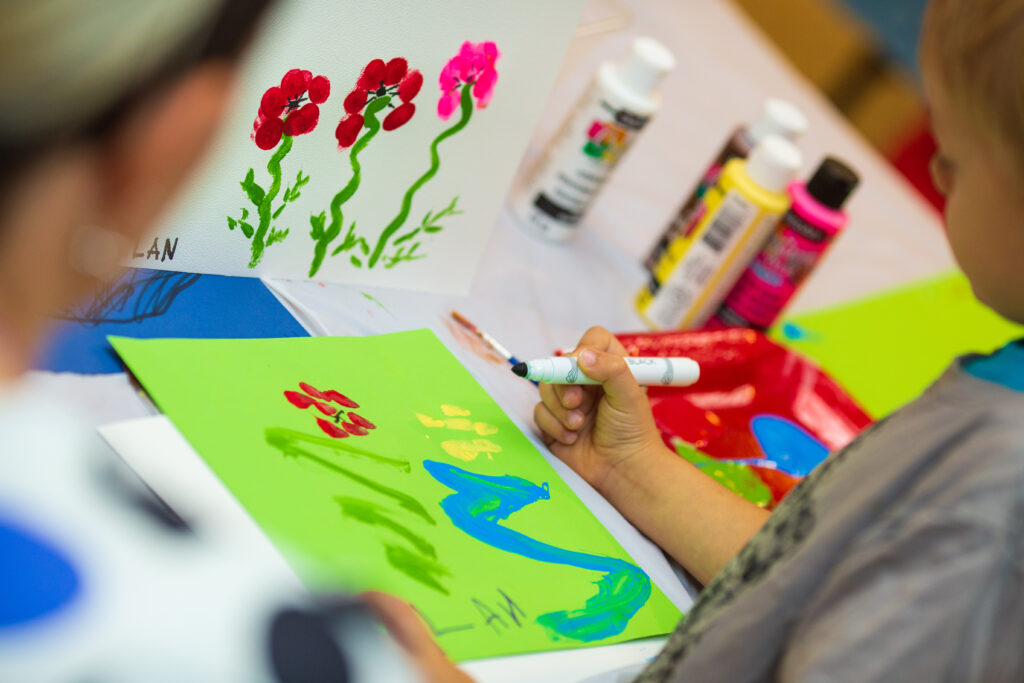Newcomer Chronicles
Bridging Cultures: Art as a Beacon of Hope for War-Affected Children in Canada

As the famous saying goes, “Kindness is the golden chain by which society is bound together.” Canadian society is renowned for its kindness and willingness to help one another. Tens of thousands of Ukrainians, forced to come to Canada in search of a peaceful and secure haven from the horrors of war, have experienced this help firsthand.
The uniqueness of the multicultural society in Toronto and GTA lies in the fact that it doesn’t matter from which country and under what circumstances you arrived here. Seekers will always find support, a sense of belonging, as well as opportunities for self-development and improvement. In addition to government-sponsored newcomer centers, there are numerous volunteer organizations that offer assistance to those in need. One example of such an organization is The Creative Inclusion project.
Initiated in November 2022 by dedicated volunteers Liz Zur and Olena Diachenko, The Creative Inclusion project aims to provide a nurturing environment for children affected by war to express their artistic abilities and build new connections, irrespective of their differences.

It is an inclusive project, which connects children with special needs and neurotypical kids in common art creation. Currently, 60% of the enrolled children face various disabilities, which can pose additional challenges during their transition, especially for those with developmental disabilities such as autism. The remaining 40% comprises siblings and children from other families who have joined to support the cause. While children engage in play and creative activities, parents come together to connect and offer emotional support in an atmosphere of tolerance and acceptance.
Classes are available at three different locations throughout Toronto, with over 50 families actively participating, including those attending classes, displaced teachers, and additional newcomers who volunteer and appreciate being part of this exceptional community. During the summer, the groups also relished various picnic excursions while engaging in outdoor games and craft activities. Presently, the initiative operates under the support and guidance of the Ukrainian Canadian Congress, Toronto Chapter. They are also very grateful to the Anglican Church of the Redeemer and the Anglican Church of St. Martin-in-the-Fields for their sincere, selfless, and responsible assistance in providing space for the classes.

Nurturing Children’s Dreams: One Art Class at a Time
Olena Diachenko shared her story about how the organization was conceived and whom it assists.
“When I arrived in Canada, I had no plans at all to volunteer with children. The urgent concerns in a new city, a new country, kept me occupied – finding a job, accommodation, and so on. Typically, volunteering is done by people who have a deep desire and extra resources of time and energy. At that time, I had no resources, neither time nor energy! But I did have the desire! I saw how the experiences of children who had come from different cities in Ukraine had left a profound impact on them. I don’t have children of my own, but I could see in their eyes that they needed something bright, joyful, and life-affirming. It was necessary to preserve and protect their childhood.”
The idea to create a therapeutic group for children and their parents originated from my friend and co-founder of the Creative Inclusion project, Liz Zur. As a mother herself, she witnessed the families who arrived in the initial wave of CUAET’s opening and offered assistance to newcomers as a volunteer. However, she realized that besides direct aid, there was a great need for informational support and emotional support.

I got to know several lovely families who arrived in Toronto, fleeing from the war. When I met our first class in October 2022, I could barely hold back tears. Bewildered and preoccupied parents, mothers in tears every day, and nervous, introverted children. All the children are unique and in need of help. But for children with special needs, it’s even more challenging to find friends, a circle of communication, and hobbies to develop fully. They require strong support. I had experience in organizing various types of events, so I decided to organize the first couple of art events to simply help initiate the classes. There’s nothing more permanent than the temporary! In the end, it really helped me 😊.
Children are a very demanding and emotionally honest audience. But in the first class we organized, I was drawing with a four-year-old boy. And then he began to talk about his day, and he started to smile. I smiled too, maybe for the first time in months. I found that bright resource within me, which I want to share. It’s a wonderful feeling, contrasting with the rigidity and self-organization. It’s a warm and sincere belief in the future we are protecting. These are the things that help me wake up every day to do something meaningful.

I plan each class from scratch, checking which Canadian holiday falls at that time, taking into account the season, and searching for a new exciting activity. Every time, we do something new – we paint, mold, color, create appliques, and interesting toys.
We started with one group of children aged 6-8 years. Currently, the Creative Inclusion includes three groups of different ages in various parts of Toronto, where children with special needs, their siblings, and neurotypical children, who have also experienced a lot in the past 1.5 years, engage in creative activities together. I lead as the art teacher for two groups: the younger group, up to 8 years old, and the older group, aged 8-15. Each class is a challenge and an opportunity for me to explore new and interesting art techniques. During the summer, we organize outdoor quests for children and parents, involving and engaging everyone!

Expanding Horizons: Plans for the Future
Liz and Olena are excitedly planning the future expansion of the program.
“We are not just working with children – we work with families. We provide parents with useful information, developmental kits, and gifts from sponsors. We create networking opportunities where parents and children communicate, find friends, and seek solutions to their problems and concerns. I eagerly watch as children begin to open up, trust, communicate, smile, play, and simply be joyful with laughter. They come alive! I can see it! This feeling is incomparable to anything else. It’s very sincerely heartening to observe how it works, and how our group grows and bonds. I am very grateful to all the volunteers in our team who help bring this project to life, and to the sponsors who support it. I am thankful to the parents for also getting involved in volunteering and assisting with class organization. I am grateful to the children; they inspire me to live, address my daily concerns, continue growing, and keep doing meaningful work.”
Certainly, there is still much to be done. People with disabilities from Ukraine often do not qualify for many of the financial support programs in Ontario, such as ODSP for adults and ACSD/SSAH for children. New Ukrainian arrivals in Canada are typically in temporary worker status with an open work permit valid for three years.
Some students adapt or relocate, but in general, the number of students continues to grow every month, especially in the older group. The organizers are compiling materials (lessons, recommendations, standards) for volunteers who are willing to initiate similar classes in their own cities. They plan to open another class in Oshawa shortly, where volunteers will establish it themselves following the experiences of the Creative Inclusion project in Toronto.
by Iryna Paltseva, a freelance writer, journalist, web-developer. You can contact her at irynapaltseva@gmail.com




